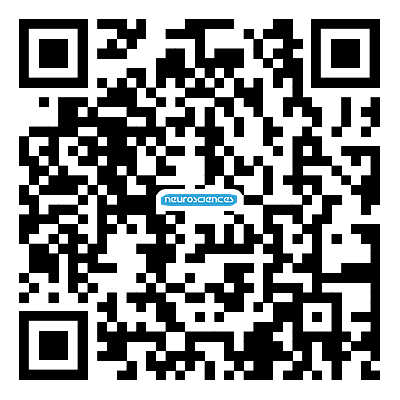REFERENCES
1. Creed F. Review article: the incidence and risk factors for irritable bowel syndrome in population-based studies. Aliment Pharmacol Ther 2019;50:507-16.
2. Kuo WC, Bratzke LC, Oakley LD, Kuo F, Wang H, et al. The association between psychological stress and metabolic syndrome: A systematic review and meta-analysis. Obes Rev 2019;20:1651-64.
3. Dar T, Radfar A, Abohashem S, Pitman RK, Tawakol A, et al. Psychosocial stress and cardiovascular disease. Curr Treat Options Cardiovasc Med 2019;21:23.
4. Antoni MH, Dhabhar FS. The impact of psychosocial stress and stress management on immune responses in patients with cancer. Cancer 2019;125:1417-31.
5. Moreno-Peral P, Conejo-Ceron S, Motrico E, Rodriguez-Morejon A, Fernandez A, et al. Risk factors for the onset of panic and generalised anxiety disorders in the general adult population: a systematic review of cohort studies. J Affect Disord 2014;168:337-48.
6. Malinauskiene V, Einarsen S. Workplace bullying and post-traumatic stress symptoms among family physicians in Lithuania: an occupation and region specific approach. Int J Occup Med Environ Health 2014;27:919-32.
7. Ambree O, Ruland C, Scheu S, Arolt V, Alferink J. Alterations of the innate immune system in susceptibility and resilience after social defeat stress. Front Behav Neurosci 2018;12:141.
8. Hodes GE, Kana V, Menard C, Merad M, Russo SJ. Neuroimmune mechanisms of depression. Nat Neurosci 2015;18:1386-93.
9. D’Mello C, Swain MG. Liver-brain interactions in inflammatory liver diseases: implications for fatigue and mood disorders. Brain Behav Immun 2014;35:9-20.
10. Grochowska M, Wojnar M, Radkowski M. The gut microbiota in neuropsychiatric disorders. Acta Neurobiol Exp (Wars) 2018;78:69-81.
11. Reader BF, Jarrett BL, McKim DB, Wohleb ES, Godbout JP, et al. Peripheral and central effects of repeated social defeat stress: monocyte trafficking, microglial activation, and anxiety. Neuroscience 2015;289:429-42.
12. Kohler CA, Freitas TH, Stubbs B, Maes M, Solmi M, et al. Peripheral alterations in cytokine and chemokine levels after antidepressant drug treatment for major depressive disorder: systematic review and meta-analysis. Mol Neurobiol 2018;55:4195-206.
13. Vogelzangs N, Beekman AT, de Jonge P, Penninx BW. Anxiety disorders and inflammation in a large adult cohort. Transl Psychiatry 2013;3:e249.
14. Felger JC. Imaging the role of inflammation in mood and anxiety-related disorders. Curr Neuropharmacol 2018;16:533-58.
15. Renna ME, Quintero JM, Soffer A, Pino M, Ader L, et al. A pilot study of emotion regulation therapy for generalized anxiety and depression: findings from a diverse sample of young adults. Behav Ther 2018;49:403-18.
16. Stuart MJ, Baune BT. Chemokines and chemokine receptors in mood disorders, schizophrenia, and cognitive impairment: a systematic review of biomarker studies. Neurosci Biobehav Rev 2014;42:93-115.
17. Dalgard C, Eidelman O, Jozwik C, Olsen CH, Srivastava M, et al. The MCP-4/MCP-1 ratio in plasma is a candidate circadian biomarker for chronic post-traumatic stress disorder. Transl Psychiatry 2017;7:e1025.
18. Fleshner M, Frank M, Maier SF. Danger signals and inflammasomes: stress-evoked sterile inflammation in mood disorders. Neuropsychopharmacology 2017;42:36-45.
19. Sawicki CM, McKim DB, Wohleb ES, Jarrett BL, Reader BF, et al. Social defeat promotes a reactive endothelium in a brain region-dependent manner with increased expression of key adhesion molecules, selectins and chemokines associated with the recruitment of myeloid cells to the brain. Neuroscience 2015;302:151-64.
20. Ramirez K, Shea DT, McKim DB, Reader BF, Sheridan JF. Imipramine attenuates neuroinflammatory signaling and reverses stress-induced social avoidance. Brain Behav Immun 2015;46:212-20.
21. Kohler O, Krogh J, Mors O, Benros ME. Inflammation in depression and the potential for anti-inflammatory treatment. Curr Neuropharmacol 2016;14:732-42.
22. Gustavson K, Knudsen AK, Nesvag R, Knudsen GP, Vollset SE, et al. Prevalence and stability of mental disorders among young adults: findings from a longitudinal study. BMC Psychiatry 2018;18:65.
23. Duckers MLA, Olff M. Does the vulnerability paradox in PTSD apply to women and men? An exploratory study. J Trauma Stress 2017;30:200-4.
24. Navarro-Mateu F, Tormo MJ, Salmeron D, Vilagut G, Navarro C, et al. Prevalence of mental disorders in the south-east of spain, one of the european regions most affected by the economic crisis: the cross-sectional PEGASUS-murcia project. PLoS One 2015;10:e0137293.
25. Wohleb ES, Hanke ML, Corona AW, Powell ND, Stiner LM, et al. beta-adrenergic receptor antagonism prevents anxiety-like behavior and microglial reactivity induced by repeated social defeat. J Neurosci 2011;31:6277-88.
26. Iniguez SD, Aubry A, Riggs LM, Alipio JB, Zanca RM, et al. Social defeat stress induces depression-like behavior and alters spine morphology in the hippocampus of adolescent male C57BL/6 mice. Neurobiol Stress 2016;5:54-64.
27. Fuertig R, Azzinnari D, Bergamini G, Cathomas F, Sigrist H, et al. Mouse chronic social stress increases blood and brain kynurenine pathway activity and fear behaviour: both effects are reversed by inhibition of indoleamine 2,3-dioxygenase. Brain Behav Immun 2016;54:59-72.
28. Takahashi A, Chung JR, Zhang S, Zhang H, Grossman Y, et al. Establishment of a repeated social defeat stress model in female mice. Sci Rep 2017;7:12838.
29. Harris AZ, Atsak P, Bretton ZH, Holt ES, Alam R, et al. A novel method for chronic social defeat stress in female mice. Neuropsychopharmacology 2018;43:1276-83.
30. Harshaw C, Alberts JR. Group and individual regulation of physiology and behavior: a behavioral, thermographic, and acoustic study of mouse development. Phys Behav 2012;106:670-82.
31. Davis RL, Stevens CW, Thomas Curtis J. The opioid antagonist, beta-funaltrexamine, inhibits lipopolysaccharide-induced neuroinflammation and reduces sickness behavior in mice. Phys Behav 2017;173:52-60.
32. Walf AA, Frye CA. The use of the elevated plus maze as an assay of anxiety-related behavior in rodents. Nat Protoc 2007;2:322-8.
33. Davis RL, Buck DJ, Saffarian N, Stevens CW. The opioid antagonist, beta-funaltrexamine, inhibits chemokine expression in human astroglial cells. J Neuroimmunol 2007;186:141-9.
34. Davis RL, Dertien J, Syapin PJ. Ethanol-induced modulation of inducible nitric-oxide synthase activity in human A172 astrocytoma cells. Alcohol Clin Exp Res 2002;26:1404-11.
35. McKim DB, Weber MD, Niraula A, Sawicki CM, Liu X, et al. Microglial recruitment of IL-1beta-producing monocytes to brain endothelium causes stress-induced anxiety. Mol Psych 2018;23:1421-31.
36. Gautam A, D’Arpa P, Donohue DE, Muhie S, Chakraborty N, et al. Acute and chronic plasma metabolomic and liver transcriptomic stress effects in a mouse model with features of post-traumatic stress disorder. PLoS One 2015;10:e0117092.
37. Quan N, Avitsur R, Stark JL, He L, Shah M, et al. Social stress increases the susceptibility to endotoxic shock. J Neuroimmunol 2011;115:36-45.
38. Sawicki CM, Kim JK, Weber MD, Faw TD, McKim DB, et al. Microglia promote increased pain behavior through enhanced inflammation in the spinal cord during repeated social defeat stress. J Neurosci 2019;39:1139-49.
39. Yin W, Gallagher NR, Sawicki CM, McKim DB, Godbout JP, et al. Repeated social defeat in female mice induces anxiety-like behavior associated with enhanced myelopoiesis and increased monocyte accumulation in the brain. Brain Behav Immun 2019;78:131-42.
40. Malisch JL, Saltzman W, Gomes FR, Rezende EL, Jeske DR, et al. Baseline and stress-induced plasma corticosterone concentrations of mice selectively bread for high voluntary wheel running. Physiol Biochem Zool 2007;80:146-56.
41. Garcia GK, Mattingly AJ, Robinson GP, Laitano O, King MA, et al. Sex-dependent responses to exertional heat stroke in mice. J Appl Physiol 2018;125:841-9.
42. McQuaid RJ, Audet MC, Jacobson-Pick S, Anisman H. Environmental enrichment influences brain cytokine variations elicited by social defeat in mice. Psychoneuroendocrinology 2013;38:987-96.
43. Niraula A, Wang Y, Godbout JP, Sheridan JF. Corticosterone production during repeated socail defeat causes monocyte mobilization from bone marrow, glucocorticoid resistance, and neurovascular adhesion molecule expression. J Neurosci 2018;38:2328-40.
44. Zhu Y, Klomparens EA, Guo S, Geng X. Neuroinflammation caused by mental stress: the effect of chronic restraint stress and acute repeated social defeat stress in mice. Neurol Res 2019;41:762-9.
45. Keeney A, Jessop DS, Harbuz MS, Marsden CA, Hogg S, et al. Differential effects of acute and chronic social defeat stress on hypothalamic-pituitary-adrenal axis function and hippocampal serotonin release in mice. J Neuroendocrinol 2006;18:330-8.
46. Asberg M, Nygren A, Leopardi R, Rylander G, Peterson U, et al. Novel biochemical markers of psychosocial stress in women. PLoS One 2009;4:e3590.
47. Mackos AR, Galley JD, Eubank TD, Easterling RS, Parry NM, et al. Social stress-enhanced severity of Citrobacter rodentium-induced colitis is CCL2-dependent and attenuated by probiotic Lactobacillus reuteri. Mucosal Immunol 2016;9:515-26.
48. Vere CC, Streba CT, Streba LM, Ionescu AG, Sima F. Psychosocial stress and liver disease status. World J Gastroenterol 2009;15:2980-6.
49. Sanchez O, Viladrich M, Ramirez I, Soley M. Liver injury after an aggressive encounter in male mice. Am J Physiol Regul Integr Comp Physiol 2007;293:R1908-16.
50. Tseilikman V, Kozochkin D, Synitsky A, Sibiriak S, Tseilikman O, et al. Does stress-induced release of interleukin-1 cause liver injury? Cell Mol Neurobiol 2012;32:1069-78.
51. Bartolomucci A, Palanza P, Parmigiani S, Pederzani T, Merlot E, et al. Chronic psychosocial stress down-regulates central cytokines mRNA. Brain Res Bull 2003;62:173-8.
52. Szyszkowicz JK, Wong A, Anisman H, Merali Z, Audet MC. Implications of the gut microbiota in vulnerability to the social avoidance effects of chronic social defeat in male mice. Brain Behav Immun 2017;66:45-55.
53. Tang J, Yu W, Chen S, Gao Z, Xiao B. Microglia polarization and endoplasmic reticulum stress in chronic social defeat stress induced depression mouse. Neurochem Res 2018;43:985-94.
54. Liang H, Flisher AJ, Lombard CJ. Bullying, violence, and risk behavior in South African school students. Child Abuse Negl 2007;31:161-71.
55. Poon K. Understanding risk-taking behavior in bullies, victims, and bully victims using cognitive- and emotion-focused approaches. Front Psychol 2016;7:1838.





